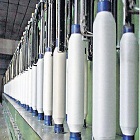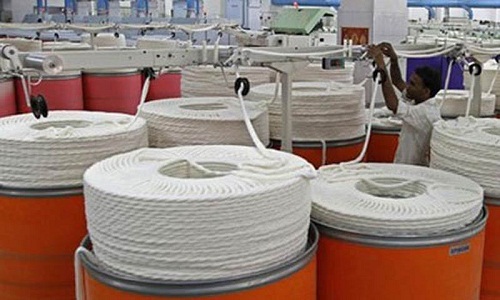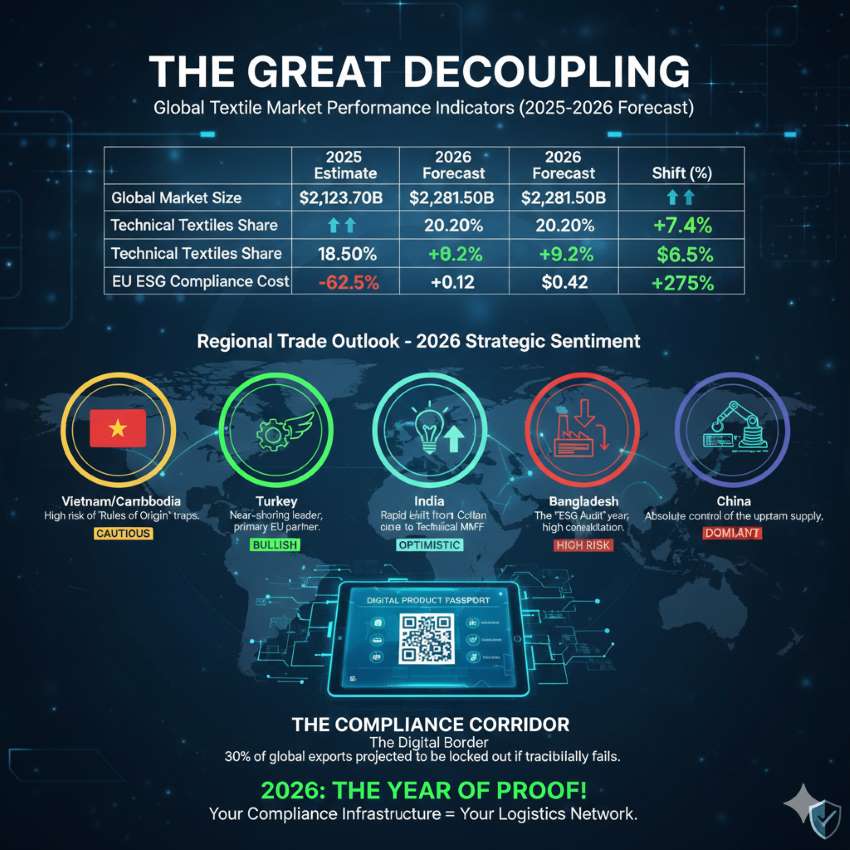FW
According to the Competition Commission of India (CCI) interim order, Indian seed companies that use global agriculture firm Monsanto's technology will not need to destroy Bt cotton seeds, patent lines and germ plasm once their contract ends. The domestic companies had filed an anti-competition case against Monsanto for the inclusion of such causes in the license agreement these have with the global giant.
If the seeds, parent-lines and germ plasm, containing the technology of Monsanto are destroyed according to the post-termination obligations, it may not be possible for the Indian seed companies to restore the same at a later point of time. Thus, such destruction would cause irreparable and irretrievable harm to the latter and needs to be prevented, said CCI in its order.
This order would be applicable only after it is approved by the Delhi High Court. However, the CCI prevented the Indian companies from selling any seeds manufactured using Monsanto technology after November 30, 2015. The companies have also been asked to keep a proper record of these seeds. As per Article 9 of the sub-license agreements with Monsanto, whenever the agreement is terminated, the Indian seed companies have to immediately cease selling or distributing the seeds, destroy all the seeds, destroy the parent lines or other cotton germ plasm.
Earlier, Monsanto had terminated the sub-license agreements with three Indian companies - Nuziveedu Seeds, Prabhat Agri Biotech and Pravardhan Seeds - on 14 November last year. After filing an anti-competition complaint on 15 December last year, the Indian seed companies moved an application on 22 December asking interim relief.
"Indian Spinners Association (ISA) are opposing the continuation of anti-dumping duties (ADD) on viscose staple fiber (VSF) citing that it will have a negative effect on the textile sector in India, which is reeling under high cost of production and sagging export demand."

Indian Spinners Association (ISA) are opposing the continuation of anti-dumping duties (ADD) on viscose staple fiber (VSF) citing that it will have a negative effect on the textile sector in India, which is reeling under high cost of production and sagging export demand. The spinners’ body’s firm stand, which is a major segment of the Indian textile chain, assumes importance in the backdrop of Directorate General of Anti-Dumping & Allied Duties (DGAD) initiating a sunset review investigation for assessing the need for continuation of anti-dumping duties on viscose staple fiber excluding bamboo fiber from Indonesia & China.
Fair competition need of hour

Incidentally, VSF is one of the major inputs for manufacturing of man-made fiber yarn in India and is mostly used for the manufacture of fabrics made of poly-viscose (PV yarn) and 100 per cent viscose yarn. Aggrieved by the unwarranted tariffs and undue protection to the sole producer of VSF in India - Grasim Industries, the spinners have made representations to the Ministries of Textiles, Commerce & Industry and Central Board of Excise and Customs for removal of ADD to ensure fair competition and to make available the viscose at international prices in India.
Industry leaders, in their interfaces with concerned officials focused on the deteriorating health of Indian textile industry characterized by widespread sickness, uncompetitive and predatory VSF pricing policy of the Grasim, absence of ‘injury’ factor for the domestic manufacturer, a necessary condition for imposing ADD, impact of the unwarranted duty on input cost escalation, exports of yarn, fabrics, made ups etc.
S K Khandelia, President ISA, the petitioner points out that as the sole producer of VSF in India - Grasim Industries - using its oligopolistic position, has been charging the Indian consumers a higher price as compared to the international prices of viscose, consistently for the past six years, under the cover of ADD. “The domestic prices are artificially kept higher by Grasim to the tune of 20 per cent of international prices, which is higher than the alleged under-cutting margin. While Grasim exports at prevailing international prices, it leveraged its monopoly and anti-dumping coverage to charge higher prices from domestic customers, leading to dual pricing system in India,” he added.
Increasing imports of viscose
While Grasim has been charging a premium on sale of VSF from domestic spinning industry, the user industry (spinning industry) has not derived any benefit during the period of ‘injury.’ Therefore, ADD has led to extending unwarranted protection and subsequent enrichment of the manufacturer at the cost of the entire textile sector (user industry), which is the highest employment provider in India. The decline in the volume of yarn sales and employment in the textile sector is attributable to increasing imports of viscose yarn and fabrics from other countries, like China, Vietnam and other ASEAN countries, leading to large outgo of precious foreign exchange.
Echoing these views, M L Jhunjhunwala, Vice President ISA, said “The imposition of ADD is being used by the domestic VSF manufacturing industry as a shield to cover its inefficiencies and inadequacies in a competitive environment. The Competition Commission has already found Grasim guilty of controlling prices and pursuing differential pricing. Discontinuance of ADD will force Grasim to become more efficient, price competitive and achieve economies of scale. It will also boost export of viscose yarn, blended yarns and fabrics manufactured in India,” he said, adding that these steps will give a critical push to ‘Make in India’ mission of the government of India. The spinning industry, being the largest industrial employer in the country, will boost multi fold development across the country if it is able to source raw materials in a more competitive manner, he pointed out.
Sunil Bhargava, Founding Partner S Bhargava Associates and advisor to ISA on ADD matters points out, “Grasim being the sole manufacturer of VSF in India is claiming to be injured by the imports at alleged lower prices, whereas their balance sheet shows losses due to mounting debt servicing cost on expansions and higher fixed overheads in Nagda unit. Water shortage is another cause of production Slippages. As per the anti-dumping rules in India, there needs to be a clear causal relationship between the injury caused to the domestic industry and the dumped imports, if any. Therefore, before reaching a conclusion, the DGAD must objectively examine all factors establishing a causal relationship before arriving at an informed decision.”
Once the ADD on VSF is lifted, the VSF prices being charged by Grasim from the domestic consumers will be aligned to the international prices. This will reduce the cost of manufacturing of the Indian textiles, leading to higher employment generation and increase in export of value added textile products.
Consumers want fashion clothing brands in advanced countries to disclose how the garments are being produced in countries like Bangladesh, who is producing the garments, and the circumstances in which they are produced. In fact, consumers are ready to pay more to ensure the safety of garment workers.
The garment industry employs more than 40 million people in Asia Pacific. Only some companies have knowledge of their complex supply chain. And when they don’t know their supply chains, there is a high chance workers are exposed to exploitation and sweatshop conditions.
There are workers in Bangladesh readymade garment factories who earn above the minimum wage but still low enough to make life a struggle. A lot of pressure is placed on workers. They are under big pressure to meet targets. Sometimes one person is made to do the work of two people. They may not even have the time to get a drink of water because of the workload.
Companies are being urged to do more, to be more transparent, to disclose the nature of their supply chains, and to ensure workers are protected. Three years after the Rana Plaza disaster in Bangladesh, there are still safety concerns for garment workers as the majority of factories are yet to meet safety standards.
The Hong Kong Research Institute of Textiles and Apparel (HKRITA) won three gold medals, one silver medal and two bronze medals at the 44th International Exhibition of Inventions Geneva.
Among the gold medals, two were awarded with special ‘jury commendation’ meaning that these were the best among all the gold medals awarded. One of the gold’s with jury commendation was our in-house project, ‘solvent-assisted dyeing of natural fiber.’
According to Edwin Keh, HKRITA's CEO the success of HKRITA at Geneva this year is a great encouragement. This is especially because of the high praise they received for their in-house project. He said, all our projects strive to address the needs of our industry, our economy, and our community. HKRITA will continue to work on innovative solutions and disruptive technologies while driving for a sustainable future. We want these projects to be the first of many more successful collaborations. Hong Kong is the leading global centre for the textile and apparel industry. HKRITA will work hard to support and strengthen the leading position of our industry.
Express say, the burden of an unsold stock coupled with unstable demand may translate in price downtrend for cotton in India for most of the year. While unsold amount of cotton is high on one hand, there have been lower expectations of any big jump in demand for the commodity. Currently cotton price is ruling at Rs 34,200-34,500 per candy of 355 kg and may fall to Rs 33,000 in next month or two. Moreover, according to traders, even if demand rises, the stock is enough to meet the same.
According to recent estimates by the Cotton Association of India (CAI), as against production estimates of 34.10 million bales (a bale of 170 kg) in the cotton year 2015-16, the arrivals till March 31, 2016 have been at around 28 million bales, down by 12 per cent from last year's arrivals of 31.84 million for the said period. Last year, the cotton production stood at 37.5 million bales.
As per the trade estimates, India has exported about 5.5 million bales so far and nearly one million more export is expected by end of the season. On the other hand, some in the industry believe that there is about 4.5 million bales of stock with India which is not sufficient to fulfill the demand in coming days and this may push prices on upside.
Planet Textiles 2016 will take place in Denmark, May 11, 2016. Derek Vollmer, research scientist at US not-for-profit Conservation International; Javier Goyeneche, president and founder of Spanish apparel brand Ecoalf; Nicole Ryecroft, executive director of Canopy; Cecilia Brannsten, sustainability project manager, H&M; and Manohar Samuel from Indian fiber producer Aditya Birla will speak at the event. Delegates from over 30 countries will attend the event that spans the complete textile and clothing supply chain.
Ecoalf is an unique fashion brand based on recycled materials recovered from the marine environment. It is supporting the Upcycling the Oceans project that helps to remove waste from oceans thanks to the support of local fishermen. A fleet of 180 vessels is already taking part in the project, which will soon expand to the entire coastline of Spain to recover deep sea waste. The main objective for Ecoalf is to recover the trash that is destroying the Mediterranean Sea and transform it into top quality yarn to produce fabrics and tailored clothes and accessories.
Conservation International is working on a new project with leaders in the apparel sector to assess and mitigate risks to water basins in textile producing regions such as China and Cambodia through the development of a freshwater health index.
During the mid-1990s, clothing and apparel corporations began receiving pushback from consumers regarding social, environmental and economic sustainability. In an effort to qualify the process of investing in corporate sustainability, University of Missouri researchers examined two major international apparel brands, Nike and Adidas, to determine the paths taken to reach corporate sustainability. Saheli Goswami, a doctoral student in the MU College of Human Environmental Sciences, says that while both companies are currently models of corporate sustainability, they took very different paths to reach the end goal.
Goswami and Jung Ha-Brookshire, an associate professor of textile and apparel management at MU, in their study examined the strategies used by Nike and Adidas from 1995 to 2012 to improve their environmental impacts, working conditions in their manufacturing plants, and other factors for sustainability. The researchers found that Adidas seemed to have been proactive early, establishing that they wanted to be a leader in the corporate sustainability movement. The researchers determined that Adidas, being an international and European brand, was motivated to become more sustainable due to opportunity for exposure through FIFA, the international soccer organization that runs the World Cup.
On the other hand, the MU researchers found that Nike initially seemed to have been resistant to the idea of corporate sustainability, actively resisting change and consumer protest in the late 1990s. Nike then appeared to take a reactionary approach until 2004, when the company decided to become transparent about their production practices. By 2010, Nike fully had transitioned to view sustainability as a driver of growth and a core business strategy. Goswami says this is an important realization for other companies to observe.
IT city Bangalore saw protest as thousands of textile workers occupied roads and streets to protest against the government of India’s decision to impose some restrictions on the conditions of Provident Fund (PF) withdrawal, which was withdrawn later on.According to police, the protestors set two Karnataka State Road Transport Corporation buses and one of Bengaluru Metropolitan Transport Corporation bus on fire. They attacked Hebbagodi Police Station and pelted stones at the station building. Several seized vehicles parked in the police station compound were also burned.
Surprisingly, the protestors were gathered at their own will and there were no trade organizations or leaders to head them. The mob went violent in different parts of the city including Bannerghatta, Jalahalli cross, and Electronic City, where the campuses of major IT companies are situated. Bangalore-Mysuru highway and Bangalore-Hosur road, both important roads connecting the IT hub with adjacent cities, were blocked for hours by the protesters. There are about 12 lakh workers in the garment sector of Bangalore. Workers from other sectors also joined the protest.
Following the protests, the government withdrew the condition that workers can withdraw only 50 per cent of their PF savings before retirement and will have to wait till 58 to withdraw the employer’s share of the PF.
For the first time, government of India and the Synthetic and Rayon Textiles Export Promotion Council (SRTEPC) have zeroed in on Surat's textile industry to promote its fabrics as an emerging brand. A two-day long buyer-seller meet will be organized under the 'Source India' programme from August 13 in Diamond City, Surat which is also the country’s largest man-made fabric (MMF) industry.
More than 100 fabric importers and garment manufacturers from across West Asia, Africa and South America will come down to Surat for direct sourcing of fabrics manufactured in Surat. The city has emerged as a leading centre of production of synthetic fabrics, especially polyester filament fabrics. The daily production of fabrics is pegged at 4 crore meters.
SRTEPC officials said that around 35 per cent of fabrics manufactured in Surat go into manufacturing of garments of men, kids and women. Most of the fabrics are supplied to buyers in Delhi, from where they are supplied to garment manufacturers across the country and even abroad.
According to SRTEPC vice-chairman Narain Aggarwal, the two-day buyer-seller meet will provide an international platform to Surti entrepreneurs. The fabrics manufactured in Surat reach international market via different channels. This is the first time that importers and garment manufactures from across the world are coming to Surat to deal directly with the fabric manufacturers here.
India’s cotton output is estimated to be 341 lakh bales for the 2015-16 season. The total output for the 2014-15 crop year stood at 382.75 lakh bales. The lower crop estimate is mainly due to crop damage in the northern region due to whitefly attack. The total crop estimated in the northern zone during the season 2015-16 is 40 lakh bales, down from 53.50 lakh bales last year.
Arrivals of cotton during the ongoing 2015-16 season continue to lag behind last year’s arrivals. Arrivals during the 2015-16 season up to the end of March 2016, which are estimated at 280.15 lakh bales, are lower by about 12 per cent than the 318.45 lakh bales that had arrived till the same period last year.
This reduction in arrivals during the ongoing cotton season is also a clear indication of a lower crop this year. Total cotton supply for the 2015-16 season is estimated at 428.60 lakh bales with domestic consumption likely to account for 305 lakh bales. That would leave a surplus of 123.60 lakh bales.
Deliveries of raw cotton to Indian mills have fallen 12 per cent this season. Cotton plays an important role in the Indian economy as the country's textile industry is predominantly cotton based. India is one of the largest producers as well as exporters of cotton yarn.












